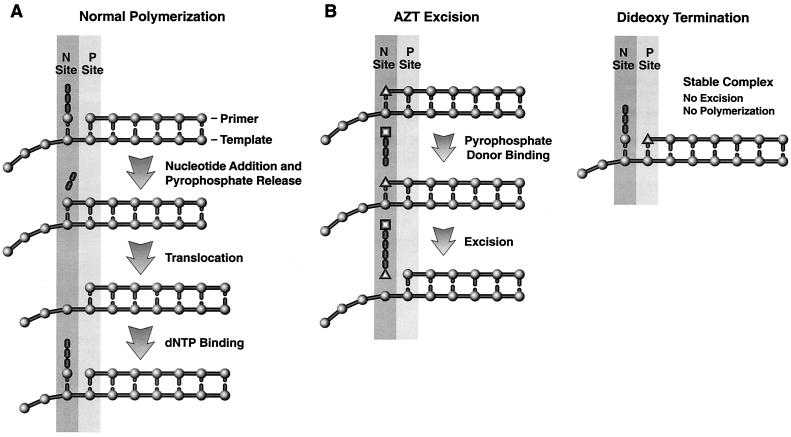FIG. 1.
Polymerization and excision reactions carried out by HIV-1 RT. (A) Diagram of a simplified version of the polymerization reaction and the relationship of the nucleotide binding (N) and priming (P) sites. At the top, the incoming dNTP is bound at the N site; the end of the primer is at the P site. In the second step (second from the top), the α phosphate is joined to the end of the primer, releasing pyrophosphate. This leaves the end of the primer at the N site. Translocation (third from the top) moves the end of the primer to the P site. The next dNTP binds (bottom), and the cycle continues. (B) The drawings on the left show the steps of AZT excision; the drawing on the right shows the stable closed complex that forms when HIV-1 RT has incorporated a dideoxynucleotide, translocated the ddNMP block to the P site, and bound the incoming dNTP. This stable complex does not form with an AZTMP-terminated primer; the AZTMP-terminated primer resides preferentially at the N site (see text). Because the AZTMP-terminated primer preferentially resides in the N site, the binding of ATP, which acts as a pyrophosphate donor (middle of left drawing), can lead to excision, producing a dinucleotide tetraphosphate (bottom of left drawing).

